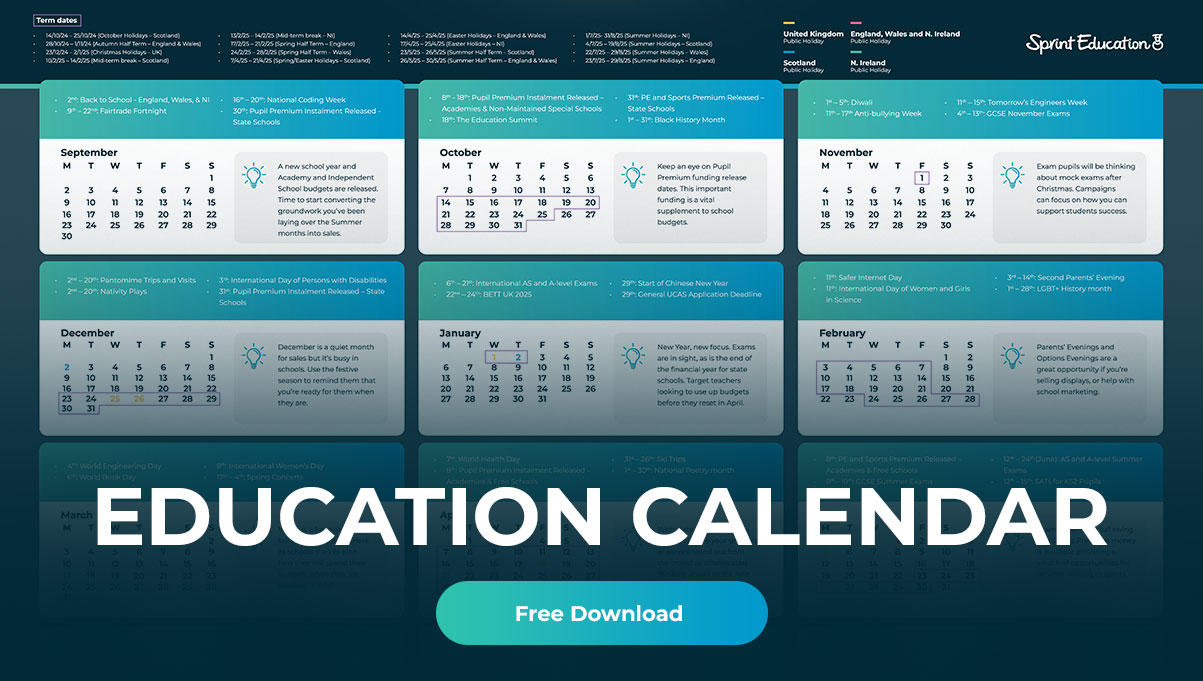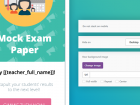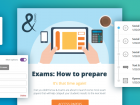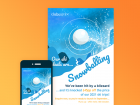How John's trade show fail can help you sell more to schools
How John's trade show fail can help you sell more to schools
How my disastrous morning at a trade show revealed the real reason your telephone follow-ups with teachers just aren’t working
How my disastrous morning at a trade show revealed the real reason your telephone follow-ups with teachers just aren’t working

I don’t ever refer to myself as a salesperson (does anyone actually like that word?).
I much prefer to think of myself as a campaign strategist who simply advises sellers to schools about the best way to grow their business. And often this just happens to result in them booking in a campaign with us or subscribing to Campus, our education marketing software.
I’m lucky that I work at Sprint.
We have an inbound marketing strategy that means we don’t really ever have to actively go out searching for new leads. Instead, the new leads come to us and initiate a discussion with me about how they can improve their marketing to schools. The conversation flows from there and I can take my time, really get under the hood of their business, and tease out the details which enable me to identify their pain-points and suggest a solution.
I’m a pretty quiet, unassuming kind of chap, and I don’t really like the thought of having to go out and speak to people that haven’t already reached the stage where they’ve decided they want to consult somebody about their marketing.
A case in point…
A couple of years ago I went to one of the world's largest education trade shows with the aim of speaking to businesses exhibiting there about our Campus software which had just been upgraded to give users the ability to send emails direct to the inboxes of over 300,000 UK school staff.
A couple of weeks before the show I sent out an email to businesses in our CRM that I knew were exhibiting there, requesting a few minutes with them to discuss their education marketing. I got around 20 positive responses, with people clicking through to my online calendar and booking a slot with me. My diary was pretty full for the day and I felt pretty happy with my efforts.
Then I got to the show and started making my way around the different stands, grabbing a few words with the business leaders that had requested a chat with me.
I quickly realised I was way out of my comfort zone.
I was used to people actively coming to me. I was used to speaking with people who had already decided they had reached the point where they needed help and advice with their marketing. People who were eager to tell me everything about their situation, answer my probing questions, and talk through my suggestions and feedback.
This was very different.
These people had other priorities. They were here to promote their products to school leaders. They were mega busy and I was a bit of a distraction.
I felt completely on the back foot. They had responded positively to an email I’d sent to them a couple of weeks ago, but that was now just a distant memory.
These people would shake my hand, we’d exchange niceties, and then they’d look at me as if to say, “I’m really busy here, I’ve got targets to meet, so you better make this good and you better make it quick!”.
I stumbled through my pitch…
“I don’t know if you’ve heard of Campus, our marketing software we’ve developed specifically for education businesses?”
“No, sorry mate, not heard of it.”
“No problem. Well, basically, Campus is made up of six different modules. The first of these modules is….”
Twenty seconds into my pitch and I’d lost them. Their eyes started darting around the room, looking at all the teachers passing by their stand who they would have much preferred to have been talking to. I ploughed on, but I knew it was a lost cause.
The morning went by in a blur of rushed conversations, fumbled pitches, hastily deposited business cards, and promises to get back in touch after the show.
Lunchtime came as a welcome relief, a brief respite from this brutal test that I was flunking badly. I grabbed a seat in the nearest café, unwrapped the sandwiches that I’d made at a time when I was still full of hope and misplaced confidence, and looked at where I was going wrong.
Was there a different skill required for these kinds of conversations that I simply didn’t possess? Was my unassuming and reserved nature just not suited to the cut and thrust world of sales pitches, cold calling, and the like?
No.
The problem wasn’t me. The problem was that I hadn’t planned for what I’d do without having the time to get to know each “lead”. How I’d grab their attention without the luxury of being able to spend time learning where their individual pain-points were and the areas they were looking to improve in their current marketing processes.
I kicked myself.
When I’d emailed them two weeks previously, the email had linked through to a short online form where I’d asked them to select a time to speak with me, I’d asked them for their email address, company name, phone number, all the usual stuff.
But what I hadn’t asked them was any “buyer persona” questions that would enable me to zero in on their particular area of interest when I actually got the chance to speak with them.
If only I’d have added an additional question to my online form, something as simple as:
“Which area of your education marketing is currently letting you down?” (With dropdown options for accurate data, open rates, click-through rates, website lead generation etc.)
Then I could have completely bypassed the awkward initial questions about their current marketing, the boring overview of Campus and all its various modules and features. I could have just opened the conversation by highlighting the exact feature of Campus that was going to solve the problems that I knew they were grappling with.
What a plonker.
I only had a handful of minutes but I wiped the breadcrumbs into my paper napkin and fished the laptop out of my bag.
I started going through all the potential clients that I was due to speak to that afternoon, I looked at all the free resources they’d downloaded from our website over the past few months, all the lead generation forms they’d completed, and all the buyer persona questions they’d answered.
Luckily, for the vast majority I managed to gather the information I needed to enter each conversation by focusing on the area that I knew would grab their attention.
That afternoon I worked like a man possessed. The glint of sweat on my brow in the morning had been borne out of a sense of unease and discomfort, but now it was the shine of a man filled with purpose and determination to salvage the day.
Gone were the tepid, rambling, boring Campus overview speeches, replaced with incisive introductions that instantly grabbed their attention…
“Hi James, I know that you’ve previously told us that poor open rates are the most disappointing feature of your in-house email campaigns to teachers. Did you know that the list segmentation feature in Campus recently helped one of our clients to increase their open rates by 40%?”
I returned home on the train exhausted but with the satisfaction of a man that knows his endeavor had not been in vain. I had some really good leads to work on closing when I got back to the office tomorrow.
So how does this help you with your education marketing and sales?
We recently sent out a survey to the businesses in our CRM, asking them what their biggest obstacle was when selling to schools. We were shocked to find out that by far the most common type of response was around how hard it was to have effective conversations with teachers off the back of a cold call to people that had engaged with an email campaign they’d sent.
I realised that the scenarios I was reading about were almost identical to my experience at the trade show that morning.
These people thought that there was some special magic trick to improving the effectiveness of these calls. Some higher-level skill that they didn’t yet possess.
It wasn’t that at all. It was just that they were calling teachers who were busy with other priorities and the first 20 seconds of their conversation hadn’t zeroed in on the particular area that could have grabbed the teacher’s attention.
The answer is simple.
You need to gather buyer persona data from your teacher leads. Every form they complete on your website in exchange for a free trial, or a downloadable resource, you need to ensure you’re not just gathering their contact details. Find out, for example, which areas of their subject they struggle to teach or what classroom challenge is preventing them from being the teacher they want to be.
Start gathering these golden nuggets of information and you’ll quickly find that you’re able to start these telephone conversations on the front foot, instantly demonstrating to teachers that you have something to say that they’re going to want to hear.
If any good can come from my disastrous trade show morning, let it be this.
Tags
Database of Schools
Email Teachers
Emailing Teachers in Schools
How to Sell to Schools
Similar Articles
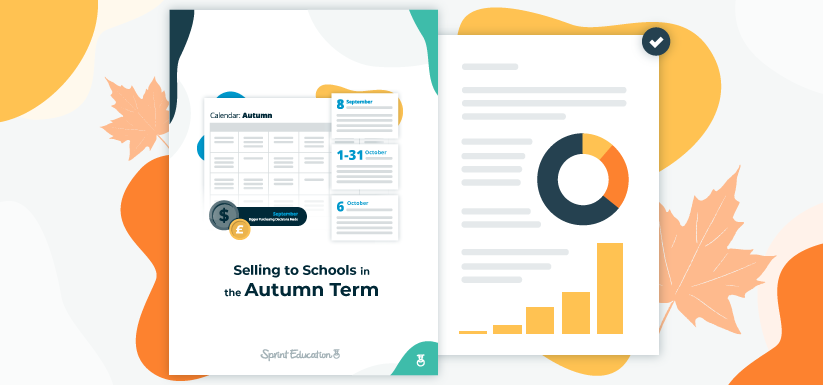

Selling to Schools in the Autumn Term 2023
Gain a sales edge for September with our exclusive school insights for the new academic year.


VIDEO: School Priorities and How You Can Target Them
Teacher priorities for 2023, and how you can help schools achieve their goals with your products, services, and offers.


Expert marketing to schools support and solutions
Expert marketing to schools solutions
Email Head Teachers, Teachers, and Staff Inboxes
Email teachers and staff inboxes
Sell More to UK and Global Schools and Colleges
Sell more to schools and colleges

















